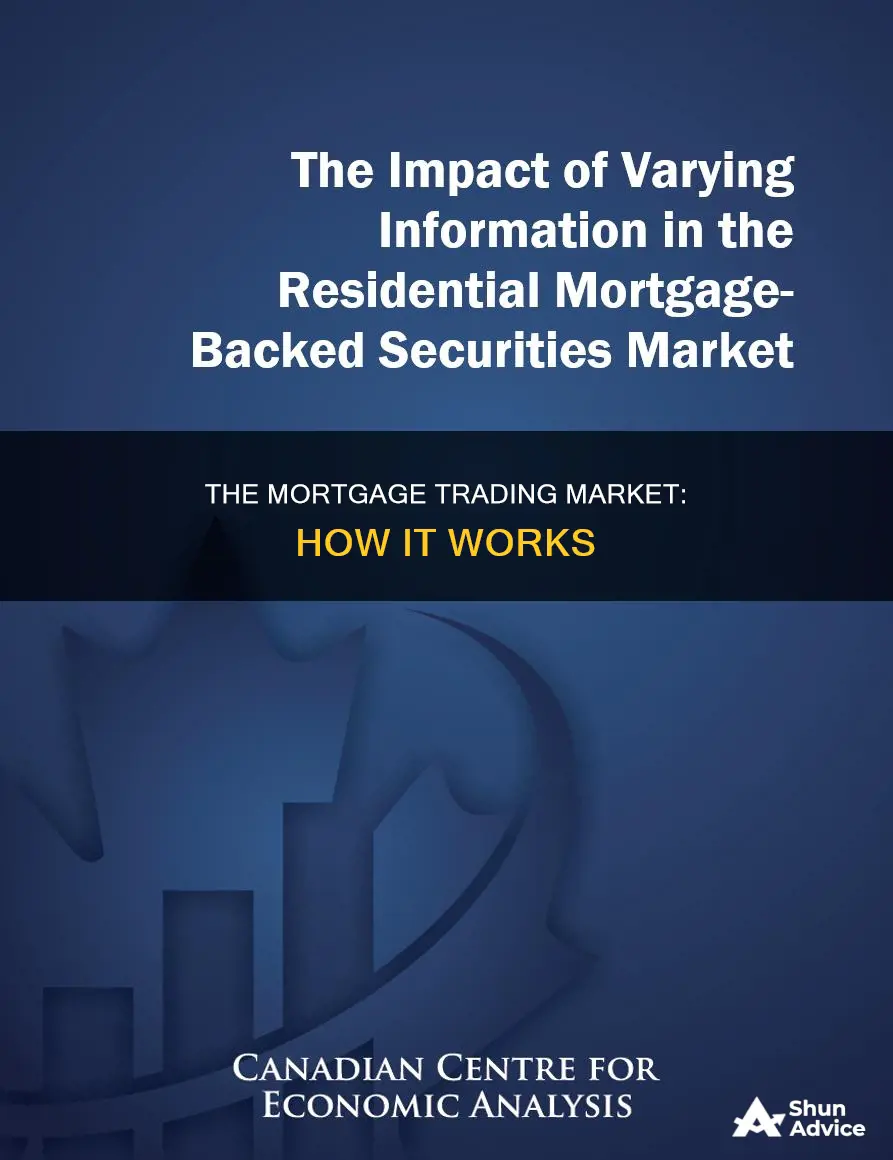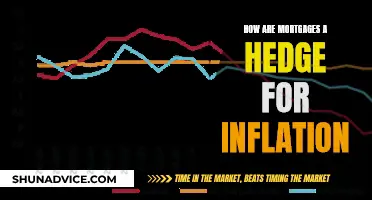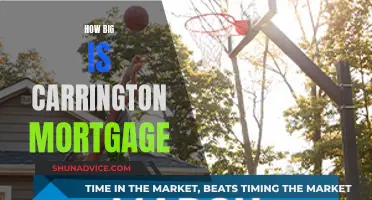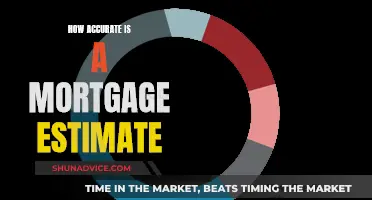
The mortgage market is divided into two parts: the primary market, where lenders issue new loans to consumers, and the secondary market, where existing mortgages are traded among financial firms. The secondary mortgage market is a financial marketplace where investors buy and sell bundled packages of individual loans, also known as mortgage-backed securities. These are considered to be of high credit quality and are often purchased to diversify portfolios and asset mixes. The secondary mortgage market helps make credit equally available to all borrowers and keeps mortgage rates low and affordable.
| Characteristics | Values |
|---|---|
| What is traded | Home loans and servicing rights |
| Who trades | Lenders, investors, mortgage originators, mortgage aggregators, securities dealers/brokers |
| Who buys | Pension funds, insurance companies, hedge funds, government-sponsored enterprises (GSEs), other investors |
| Who sells | Mortgage originators, lenders |
| Why are they traded | To provide liquidity for lenders to make additional loans, to diversify investors' portfolios and asset mix, to provide income for investors |
| How are they traded | Loans are packaged into mortgage-backed securities (MBS) or collateralized mortgage obligations (CMOs) and sold to investors |
| What affects the market | Interest rates, the health of the economy, the ability of borrowers to make repayments, the risk of default |
What You'll Learn

The primary mortgage market
In the primary mortgage market, borrowers approach financial institutions, such as banks, credit unions, or specialized mortgage lenders, to apply for a mortgage loan. The borrower's creditworthiness, income, employment history, and other financial factors are assessed by the lender to determine the eligibility and terms of the loan. This process involves a thorough evaluation of the borrower's ability to repay the loan, including the verification of income, employment status, and credit history.
Once the borrower's financial information is assessed and the property value is appraised, the lender decides whether to extend the loan and under what conditions. These conditions include the interest rate, the down payment amount, the loan term, and any additional requirements or restrictions. The interest rate offered is influenced by various factors, including the prevailing market rates, the borrower's credit score, and the loan-to-value ratio.
After the loan is approved, the borrower receives the funds to purchase the property, and the lender obtains the right to receive payments from the borrower over the life of the mortgage. These payments typically include both the principal amount and the interest accrued. The specific terms and conditions of the mortgage, including the repayment schedule and any applicable penalties for late payments or refinancing, are outlined in a legal contract between the borrower and the lender.
In some cases, lenders may sell the mortgages they originate in the primary market to government-sponsored enterprises (GSEs) or
Mortgages in the US: What's the Guarantee?
You may want to see also

The secondary mortgage market
Mortgages are originated in the primary market, where lenders and borrowers come together to transact. However, a large percentage of newly originated mortgages are sold by the lenders that issue them into the secondary market. Here, they are packaged into mortgage-backed securities (MBS) and sold to investors such as pension funds, insurance companies, and hedge funds.
Mortgage Broker Regulation: What You Need to Know
You may want to see also

Mortgage-backed securities
The secondary mortgage market is a marketplace where investors buy and sell mortgages that have been securitised or packaged into bundles of many individual loans. These are known as mortgage-backed securities (MBS).
Mortgages are originated by mortgage originators, such as banks or other financial institutions, which initiate and make new loans to homebuyers. The originators may then aggregate mortgages for a certain period before selling the whole package or sell individual loans as they are originated. These are often sold to large aggregators, such as Fannie Mae or Freddie Mac, which buy two-thirds of mortgages in the US. Aggregators can then repackage the loans as MBSs or hold them on their books and collect the interest from borrowers.
MBSs are then sold to securities dealers or brokers, who further package the MBSs in various ways and sell them to investors. These investors do not gain control of the mortgages but receive the interest income from the borrowers' repayments. The investors then receive a return on their investment.
The secondary mortgage market is extremely large and liquid, helping to make credit equally available to all borrowers across geographical locations. It also allows loan issuers to continue funding more loans, as they can sell the mortgages to free up their balance sheets. Without the secondary market, mortgage rates would be much higher, and most people would not be able to afford to buy a home.
Mortgage Rates: What's Behind the Recent Rise?
You may want to see also

Mortgage originators and aggregators
The mortgage market consists of two parts: a primary and a secondary market. The primary market consists of lenders that originate mortgages for consumers. These are known as mortgage originators. Mortgage originators make money through the fees charged to originate a mortgage and the difference between the interest rate given to a borrower and the premium the secondary market will pay for that interest rate.
The secondary market consists of mortgage investors who buy mortgages to provide liquidity for lenders to make additional loans. Mortgage originators might aggregate mortgages for a certain period before selling the whole package or sell individual loans as they are originated. These are then often sold to large aggregators.
Aggregators are large mortgage originators with ties to Wall Street firms and government-sponsored enterprises (GSEs) such as Fannie Mae and Freddie Mac. They purchase newly originated mortgages from smaller originators and form pools of mortgages that they securitize into private-label mortgage-backed securities or form agency mortgage-backed securities.
Mortgage-backed securities are considered to be of high credit quality and provide higher yields than other low-risk bonds. They are bought and sold by various entities in the secondary mortgage market, including mortgage originators, mortgage aggregators, securities dealers or brokers, and investors.
Making Mortgage Overpayments: How Does It Work?
You may want to see also

Investors
The secondary mortgage market is a marketplace where investors buy and sell mortgages that have been securitised, or packaged into bundles of many individual loans, also known as mortgage-backed securities (MBS). MBSs are bought and sold by various entities, including mortgage originators, mortgage aggregators, and securities dealers/brokers. Investors are the end-users of mortgages in this market.
Mortgages are traded by investors in several ways. Firstly, investors purchase mortgages from lenders, often government-sponsored enterprises (GSEs) such as Fannie Mae and Freddie Mac, or government agencies like the Federal Housing Administration (FHA) and the Department of Veterans Affairs (VA). These agencies buy mortgages that meet their investor guidelines and then resell them on the secondary market to private investors. GSEs, like Fannie Mae and Freddie Mac, also buy mortgages from various sectors of the primary mortgage market and bundle the mortgages they purchase to sell to outside investors. Secondly, investors buy MBSs from securities dealers, who structure them into various investment products with different risk profiles and prepayment characteristics. These investment products are then sold as securities to investors, who are often seeking income-oriented instruments.
The investors in the secondary mortgage market include foreign governments, pension funds, insurance companies, banks, GSEs, and hedge funds. These investors set guidelines that determine the types of loans that can be obtained, including eligibility requirements such as credit scores, debt-to-income ratios, and the types of real estate that can be purchased. As a result, the secondary market impacts a borrower's ability to get a mortgage and the cost of the loan.
The secondary mortgage market is extremely large and liquid, providing liquidity for lenders to make additional loans and keeping the real estate market running. It also helps make credit equally available to all borrowers across geographical locations and lowers mortgage rates by allowing loan issuers to continue funding more loans.
Late Mortgage Fees: Collection Methods and Your Options
You may want to see also
Frequently asked questions
The mortgage market is the industry providing loans for purchasing homes. It consists of two parts: a primary and a secondary market. The primary market consists of lenders that originate mortgages for consumers. The secondary market consists of mortgage investors like Fannie Mae and Freddie Mac, who buy mortgages to provide liquidity for lenders to make additional loans.
The secondary mortgage market is a marketplace where existing mortgages are traded among financial firms. It is a market where mortgage loans and servicing rights are bought and sold by various entities.
The four major players in the secondary mortgage market are mortgage originators, mortgage aggregators, securities dealers/brokers, and investors. Mortgage originators create the loans, mortgage aggregators buy and securitize the loans, securities dealers/brokers sell the securitized loans, and investors buy the securitized loans for their interest income.
After originating a loan, a lender often sells it on the secondary mortgage market. The loan is often sold to large aggregators, who then distribute thousands of similar loans in a mortgage-backed security (MBS). The MBS is then sold to a securities dealer, who further packages the MBS and sells it to investors. These investors receive the interest income from the borrowers' repayments.
The secondary market plays a significant role in a homebuyer's ability to get a mortgage and the cost of the loan. It helps keep mortgage rates low and makes credit more accessible to borrowers across different geographical locations.







